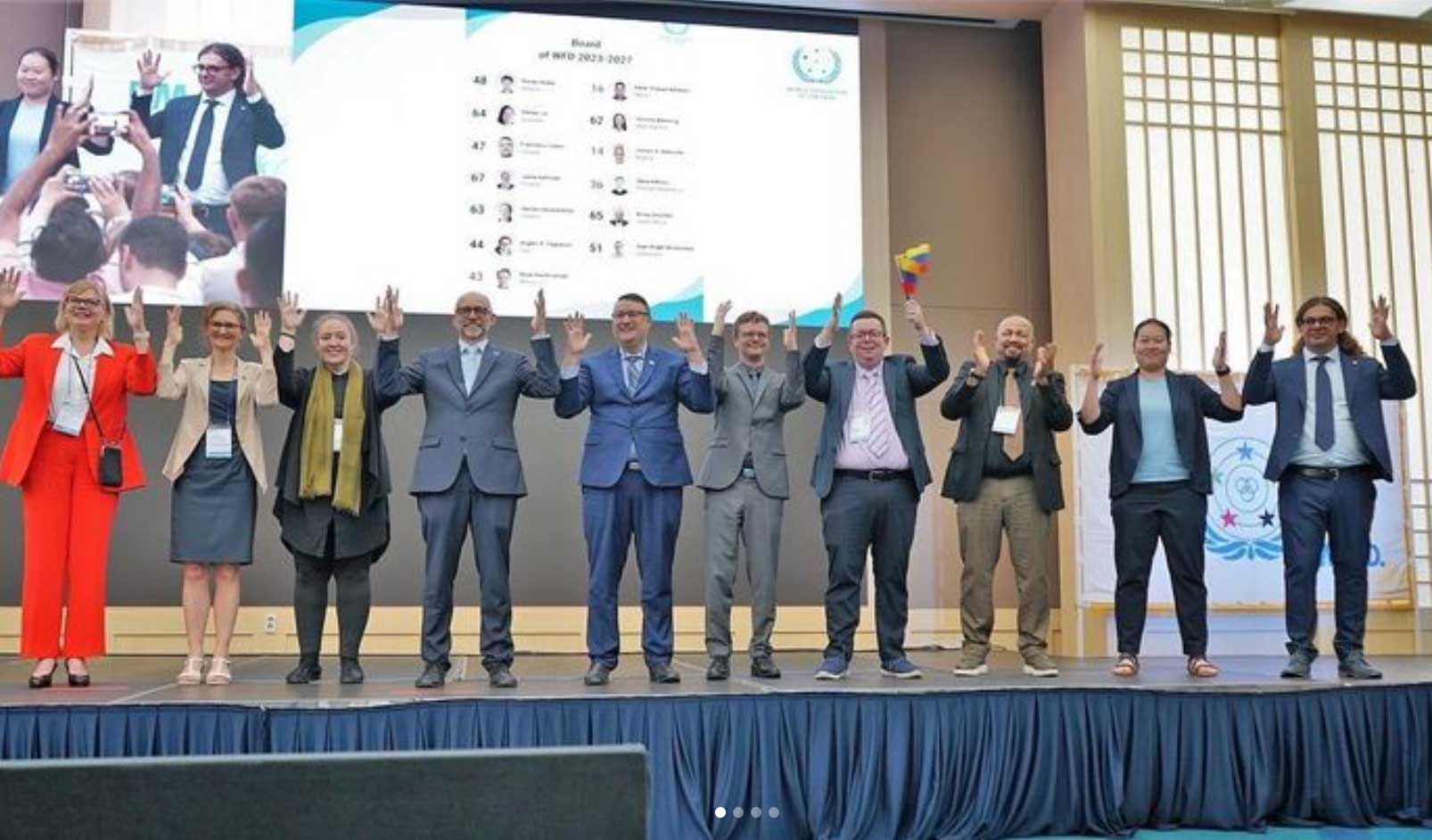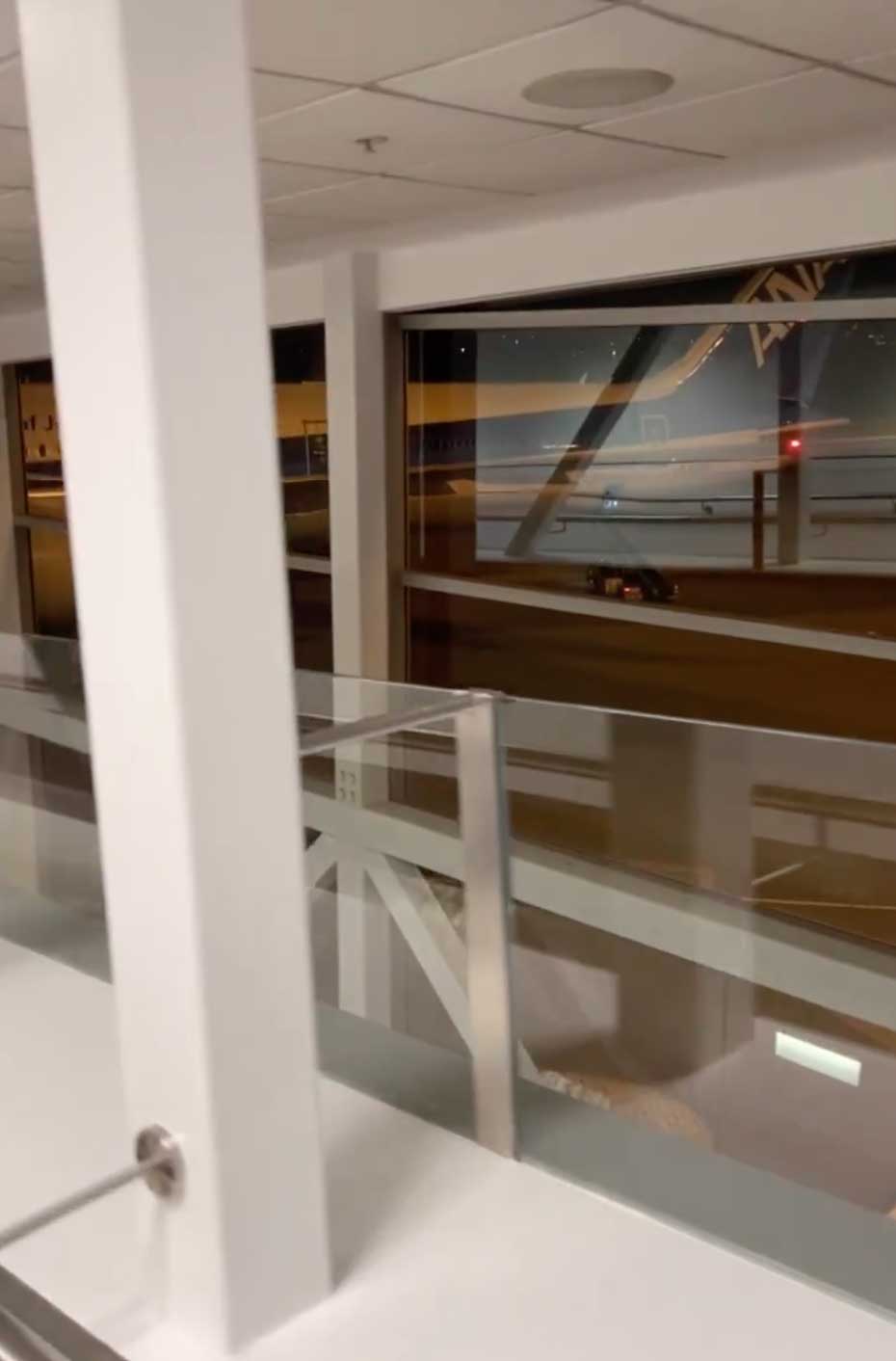



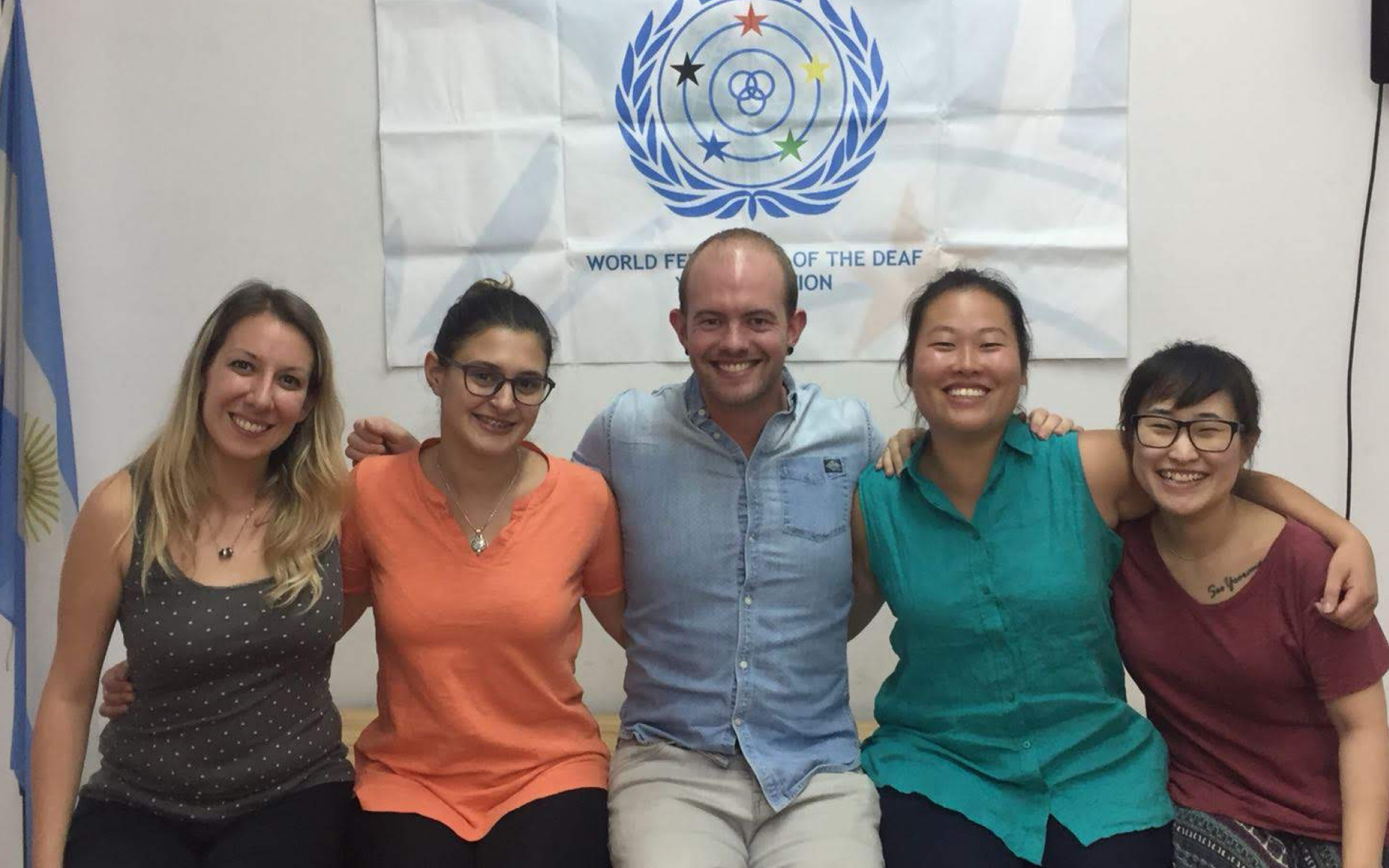


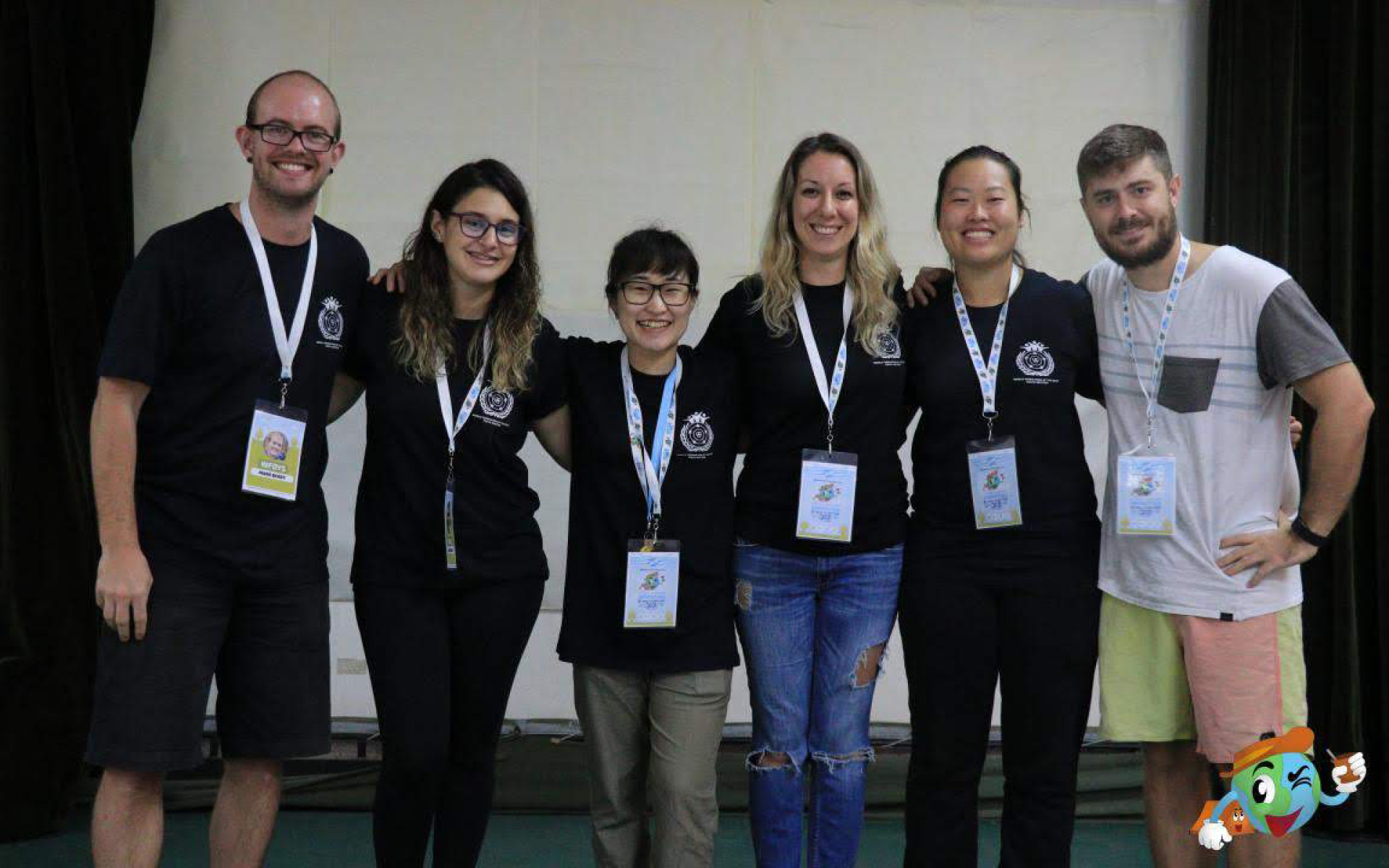
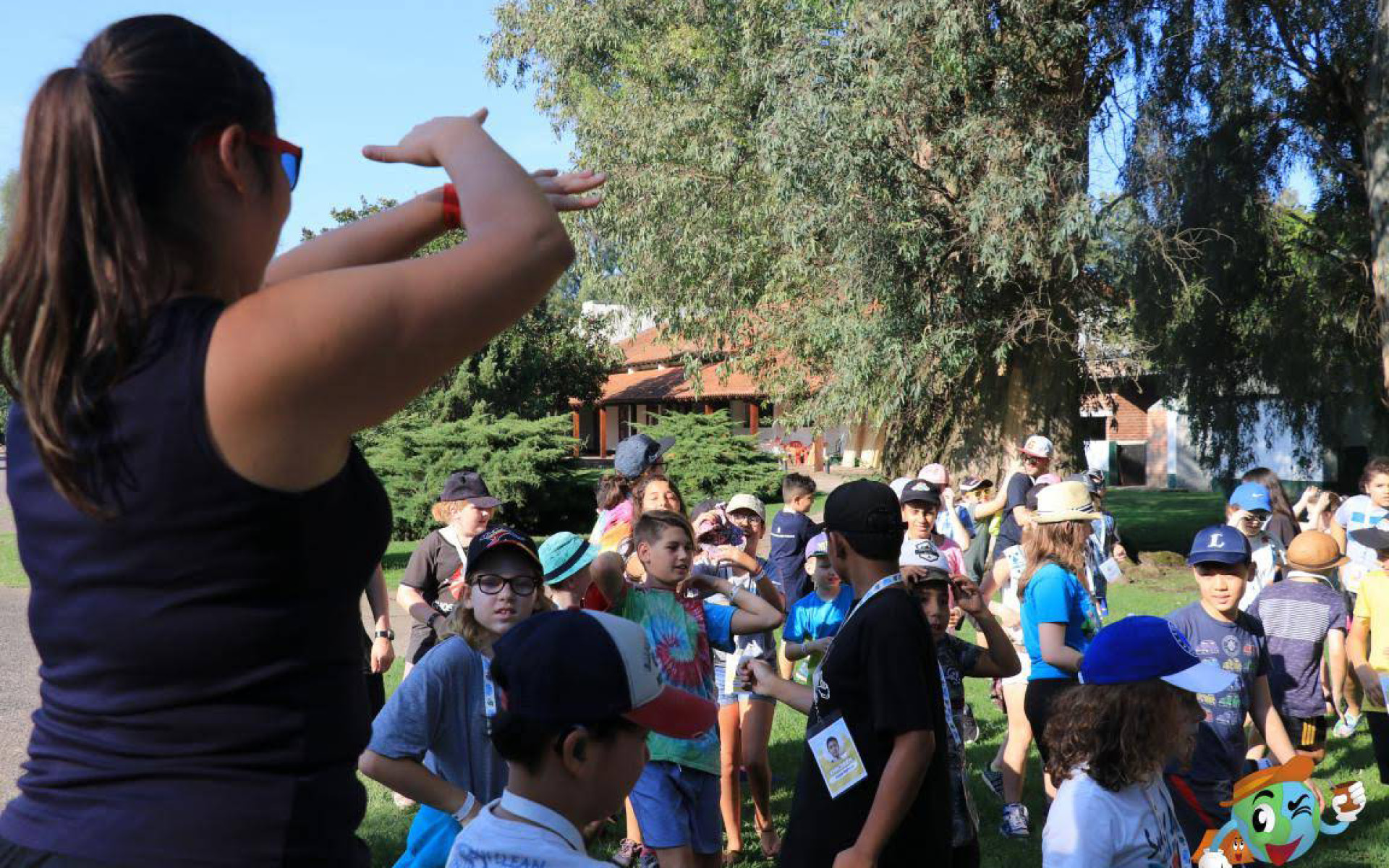

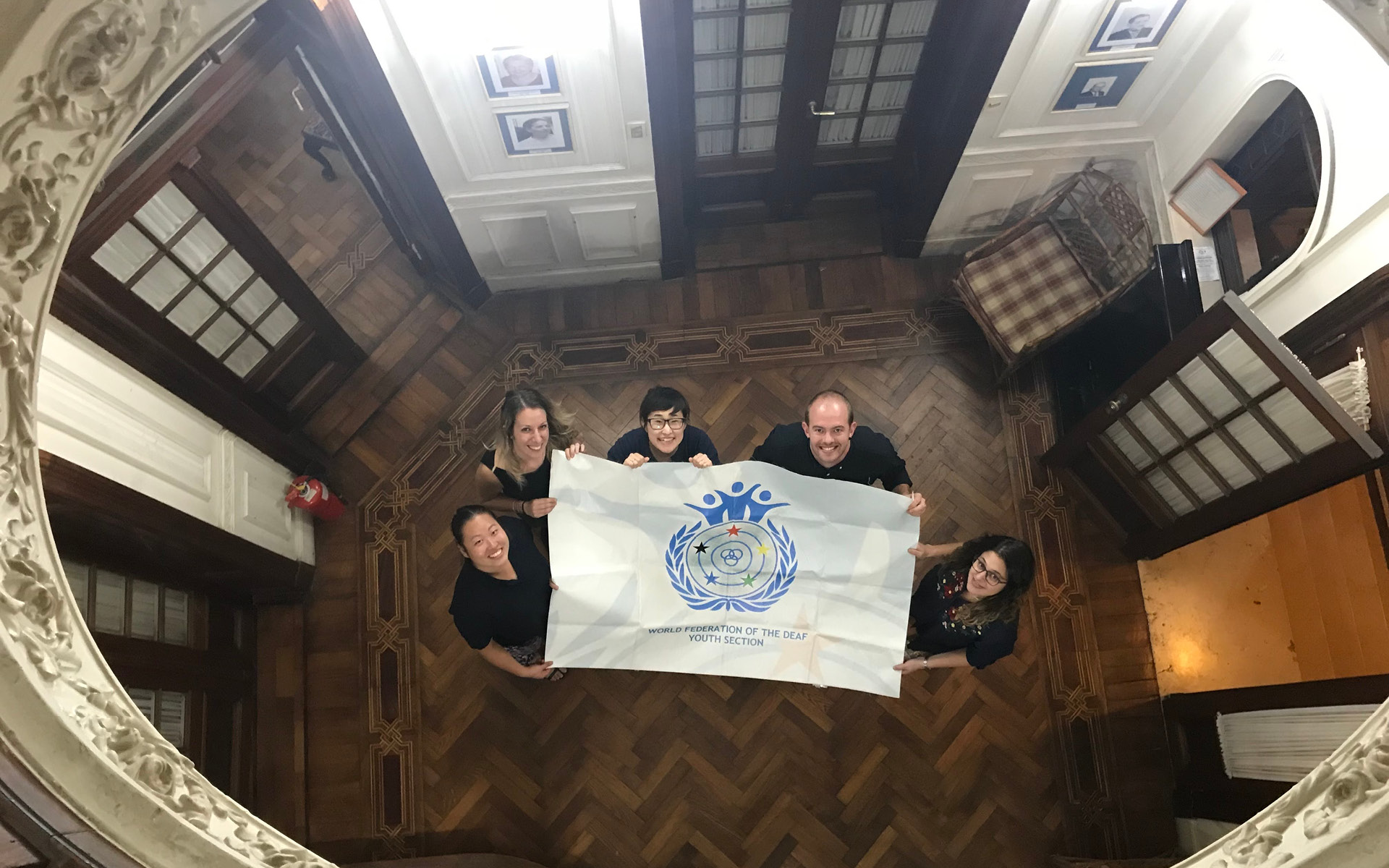
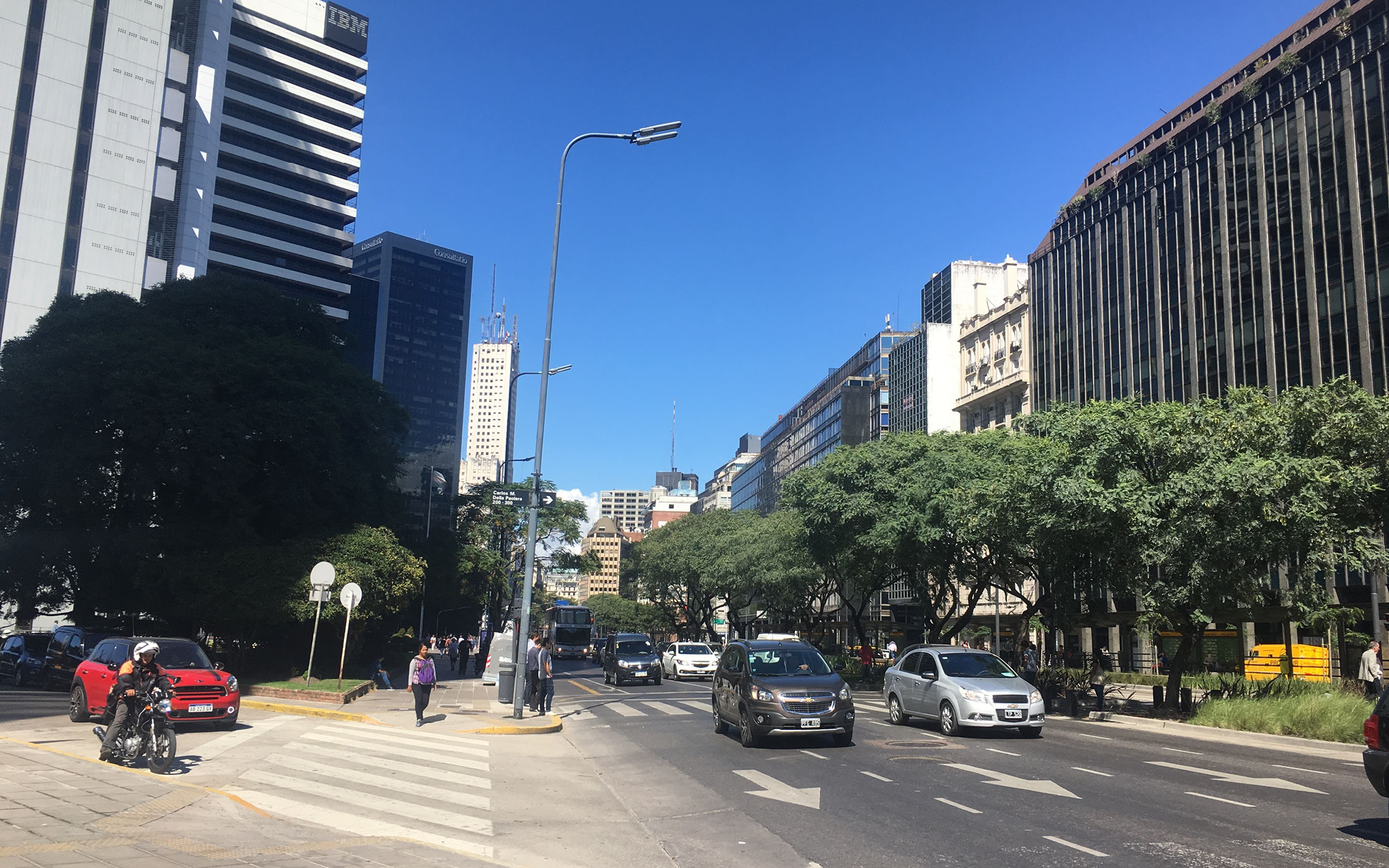
















My usual strategy for trips involves planning a few days of sightseeing before any WFDYS meetings. Going to Buenos Aires was another instance of this. I spoke with Mark Berry from the board about getting together and planning several days of activities with him. We agreed to take a trip to Brazil, and our first stop was Rio de Janeiro. We both flew in and were met by a Deaf Uber driver who took us to our hotel. We were both excited to visit the many attractions around the city, including the Christ our Redeemer statue on Corcovado, Sugarloaf mountain and the best beach ever, Copacabana. The city is crowded with people, and soccer is a massive sport in Brazil, so there were references to the teams and soccer balls everywhere.
One of the most interesting observations was the separation of class. The rich folk don’t mingle with the poorer classes. Those in the middle to low-income socio-economic groups live in ghettos and slums, but the people are energetic and vibrant despite this. Generally, it is not safe to walk alone in many city areas. We saw some interesting art installations as we travelled around. We also wandered through one of the world’s most famous favelas (slums) called Rocinha. Most of the world’s shantytowns do not attract visitors on a large scale, but this one is different. In fact, without this significant tourism, Rio de Janeiro would not be as big as it is today. Even with, or because of, the many tourists who flock there, it is quite a dangerous place to visit. People can openly carry guns, and having valuables makes you a target. Indeed the favela is a dangerous place to see unless you are with a local who can guide you around. So I recommend it as a place to visit but only if you have a local guide.
After taking in several sightseeing attractions, Mark and I held a meeting with the Brazilian National Youth Association members. They were very curious about how they could work better with WFDYS and the local Deaf groups. We provided them with some guidance on writing policies that would align better with the WFDYS. In all, it was a very positive meeting. We then visited a local Deaf school, Instituto Nacional de Educação de Surdos (INES), where we were asked to give a short presentation. In all, about 200 children and adults came along. I think we made quite an impact because they had many questions about WFDYS and youth camps, to name a few. It became apparent that the Youth Association could assist these young deaf people. Hence, we encouraged them to make contact, begin a formal dialogue and participate in future youth camps. I enjoy seeing the fruits of my labour in making connections with people as it kills two birds with one stone, especially since our visit allowed us to meet kids from primary and high schools.
After these visits, we took a flight to Sao Paulo to spend a few days hanging out with some local Deaf people. The community there is quite large, and interestingly the cities differ dramatically. Sao Paulo seemed a lot more established with better-urbanised infrastructure.
Immediately after, we flew back to Buenos Aires, where we happily welcomed two new board members to our meetings. I imagined the transition would take some time but was surprised to feel instantly engaged and on track with our latest members. Our priority was ensuring everything was in line for the upcoming camp, and once again, we organised our tasks accordingly. Then looking ahead, we knew there would be two more board meetings before the Paris camp in 2019. So that made us highly focused.
We began the children’s camp in earnest and fully expected the kids from all parts of the world to be nervous and anxious. In particular, the kids felt concerned about communication and relied heavily on their national leader. At first, many kids showed reluctance to get involved with activities. They were more inclined to sit back, so we worked hard to encourage them constantly and slowly, but they became more comfortable each day. The turn-around was dramatic. Part of our underlying principle is to foster a sense of feeling safe and not be concerned with making mistakes. This helped make the camp a great experience, and very few problems came up. In addition, the camp organising committee worked well with the WFDYS board. We ran many activities, and everyone enjoyed the week. Some of the activities took us on excursions which was a great learning experience that, in turn, helped their language skills and strengthened their identities. It was a tremendously important cultural and learning exchange, particularly in this time of access to technology. Unlike meeting new people when I was young, when we had to rely on writing letters and sending them in the post, kids these days can connect and communicate with each other straight away. Technology has come a long way. Some kids from one country had to leave a day early, and everyone was sad to see them go. That made me realise our work makes a real impact on their lives. Seeing these results up close drives me to encourage other kids to participate in future camps. After the camp was done, I flew back home and shared the flight with several Aussie participants. They all wanted the camp to run for two weeks! I don’t think I could ever have the energy.


